Intermediate switch lighting circuits. In this video we’re going to be looking 4 different ways to control a light using 3 separate switches and then also two ways to control a light using 4, or more switches. This is useful for example to control the lights on stairs to different floors or perhaps from either side of the bed and at the bedroom door, like you might find in a hotel.
Scroll to the bottom the watch the YouTube video tutorial on intermediate switches
In our last tutorial we looked at how to control a light with just two switches. Do check that out if you haven’t already, click here to see.
Warning
Electricity is dangerous and can be fatal, you should be qualified and competent to carrying out any electrical work. Never work on live/hot electrical circuits.
This system is called by a different name depending on where you live. In north America this is called a 4 way switched circuit and in the EU and other parts of the world this is called an intermediate switch circuit. We’re going to focus on the EU/UK method and colour coding.
To make this circuit work we require two different types of switches. A two way switch and an intermediate switch. Again, the names of the type of switches depends where in the world you live.
The two way and intermediate switch will look the same on the front. However, the two way has 3 terminals on the back. The switch can be flipped only two ways, up or down, but the electricity can flow through the switch in 4 different ways, depending on how it’s connected into the circuit.
The intermediate switch can also only be flipped two ways, up or down, but on the back we find 4 terminals. The electricity can flow through this in 14 different ways, depending on how it’s wired.
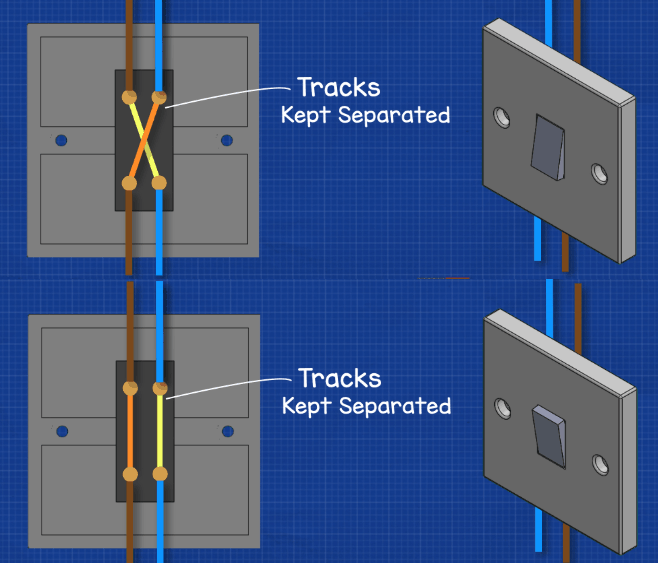
This switch has a mechanical component inside which means that when the switch is flipped, it crosses its’s arms to change the direction. These two arms DO NOT TOUCH they are kept separated. By crossing it’s arms to change the direction we can therefore make or break a circuit.
The colour of the cables varies around the world. In this video I’m using the European colour code but you should check your local regulations.
Method 1 – New install

The first circuit we will look at is the simplest method and the easiest to understand. It’s typically used for a new installation.
We have our two way switches at either end and then an intermediate switch in the middle. We take our live feed and connect it into the common of switch 1. We then run a brown cable from L1 of switch 1 over to L4 of switch 2. We then run a brown cable from L2 of switch two, over to L2 of switch three.
We then run a blue wire from L2 of switch 1 over to L3 of switch 2, we place a brown sleeve at each end of the wire to warn that it is intermittently live. We run another blue wire from L1 of switch 2 over to L1 of switch 3. And then we run a final blue wire from the common of switch 3 up to the light.
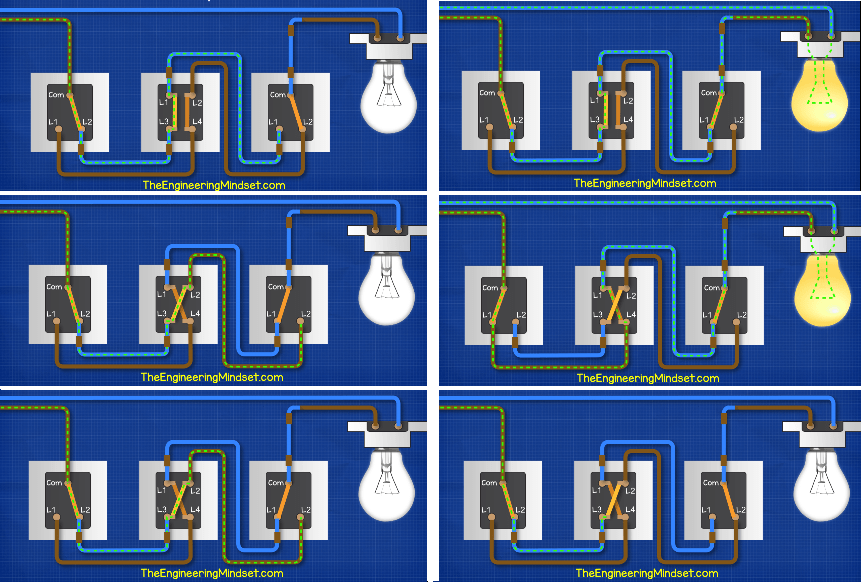
Now, when we turn the power on, the electricity can flow through switch one and two and into switch 3, but the circuit is broken so the light is off. If we then flip switch 3, we complete the circuit and the light turns on. If we flip switch 2 we cross the paths and break the circuit. If we flip switch 1 we make the circuit again. If we flip switch 1 again then we brake the circuit. If we flip switch 3 then we complete the circuit. And if we flip switch 2 then we break the circuit.
Method 2 (existing install)
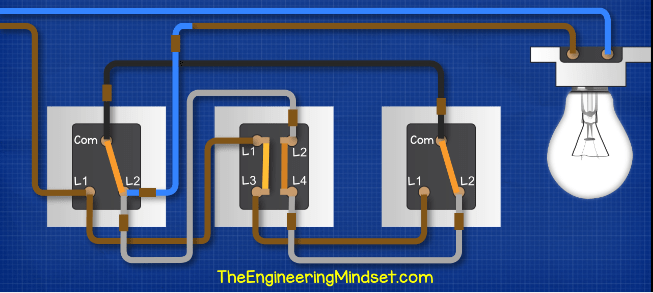
This is the second method which is typical for converting an existing circuit.
In this version we run the live to L1 of switch 1, then from, L1 of switch 1 to L1 of switch 2, then from L3 of switch 2 to L1 of switch 3.
We then run a grey wire from L2 of switch 3 to L4 of switch 2, placing a brown sleeve on the wires to indicate that it is intermittently live. We then run another grey wire from L2 of switch 2 to L2 of switch 1.
We then join the two end switches with a black wire to each common. And then connect the blue wire from L2 of switch 1 to the light circuit.
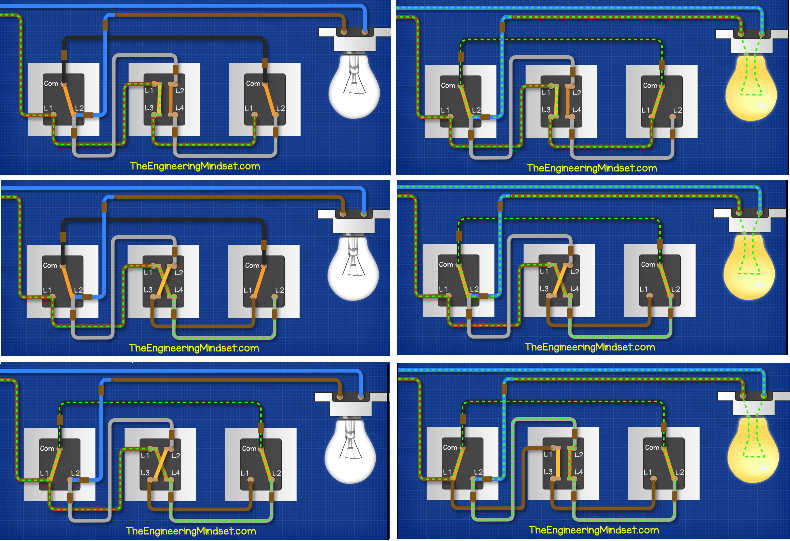
When we turn the power on the electricity passes through switch 1 and 2 and stops at switch 3 because the circuit is broken. If we flip switch 3 we make the circuit and the lamp turns on. If we flip switch 2 then we break the circuit and the lamp is off. If we flip switch 3 we make the circuit again. If we flip switch 1 then we break the circuit so it can’t reach the lamp. We flip switch 2 to make the circuit and we break the circuit by flipping switch 1.
Method 3 – variation of method 2 (Existing install)
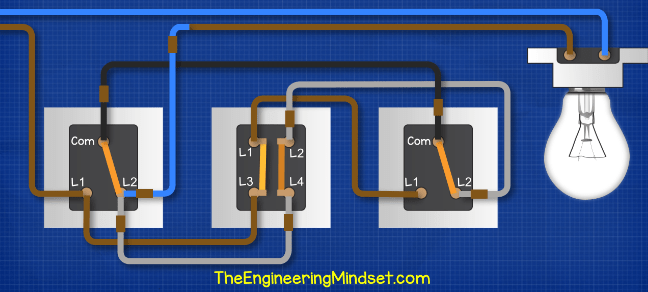
This method is a variation of the last one where we use the same cables but change their route a little. We have the live into L1 of switch 1, then a brown wire from L1 of switch 1 to L3 of switch 2, then another brown wire from L1 of switch 2 to L1 of switch 3.
Then we have the grey wire from L2 of switch 1 to L4 of switch 2 and another from L2 of switch 2 to L2 of switch 2. Then a black wire between the two commons and finally the blue wire back to the lamp circuit.
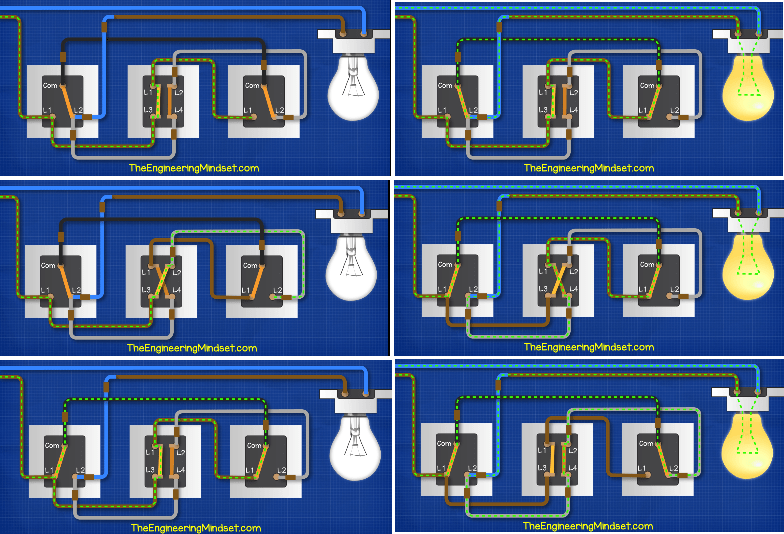
When we power this circuit, the electricity flows through switch 1 and 2, but stops at switch 3. If we flip switch 3 we make the circuit and the light can turn on. If we flip switch 2 we break the circuit. If we flip switch 1 we make the circuit. If we flip switch 2 we break the circuit. If we flip switch 3 we make the circuit and if we flip switch 1 we break the circuit.
Method 4 (Existing install)
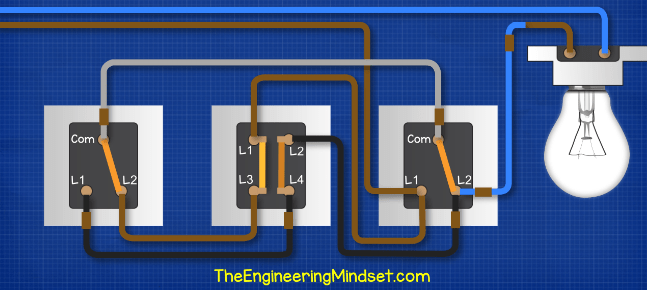
In this design we’re bringing the power and lamp control to the right most switch. We run a brown wire from L1 of switch 3 to L1 of switch 2, then another brown wire from L3 of switch 2 over to L2 of switch 1. Then we run a grey wire from the common of switch 1 over to the common of switch 3. We then run a black wire from L2 of switch 3 to L2 of switch 2, then another black wire from L4 of switch 2 over to L1 of switch 1 and finally we have the blue wire from L2 back to the lamp.
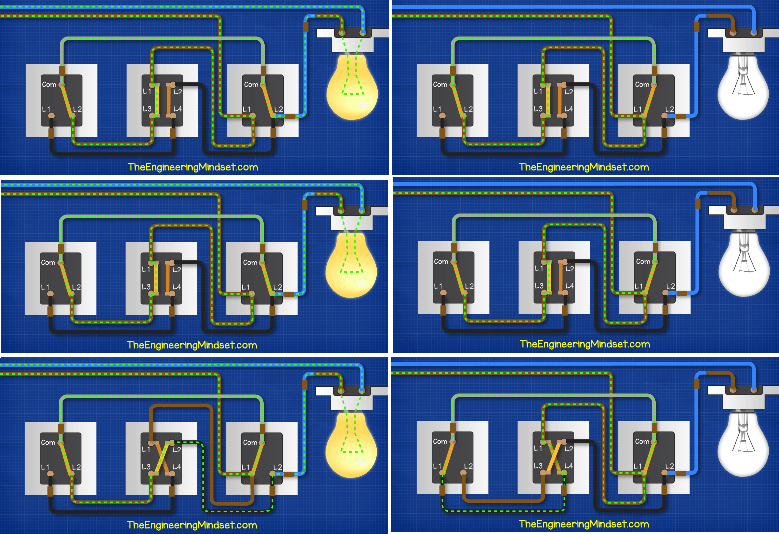
When we power this circuit, the circuit is complete so electricity flows through switch 3, 2, 1 and back to 3 where it then feeds the light. If we then flip switch 3 we break the circuit. If we flip switch 2 we make the circuit again. If we flip switch 1 we break the circuit. If we flip switch 3 we again make the circuit. If we flip switch 2 we break the circuit and if we flip switch 1 we make the circuit.
Method 5 – Simple 4, 5, 6 etc switching (New install)
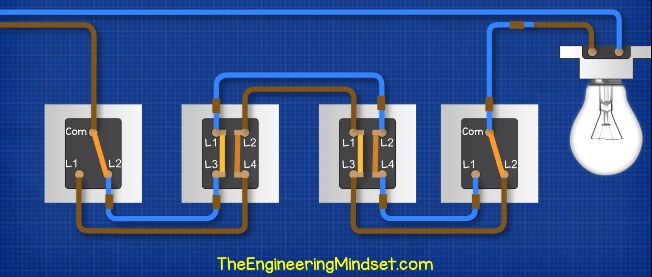
This method is the simplest way to connect 4, 5, 6 or more switches into a light circuit. It’s based off the design in the very first method we saw earlier in the video. This is typically used for completely new installations. The power comes in from one end and the lamp is connected to the other end. This way allows any switch to make or break the circuit.
Method – 4, 5, 6 etc switching conversion (existing install)
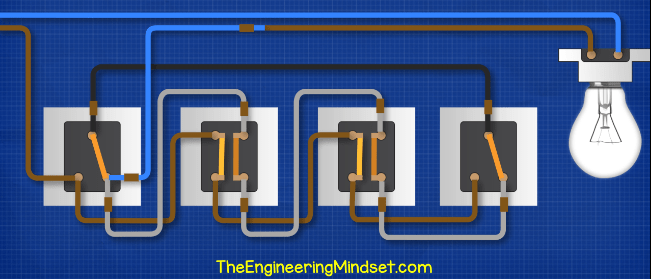
With this method we can add 4, 5 ,6 or more switches to an existing installation and we base it on the 3rd method which we saw earlier in the video. For this we just extend the black wire from the two common terminals of the switches and then we run the grey and brown wires between the switches. This allows us to extend it as much as we need. Each switch can then make or break the circuit independently.

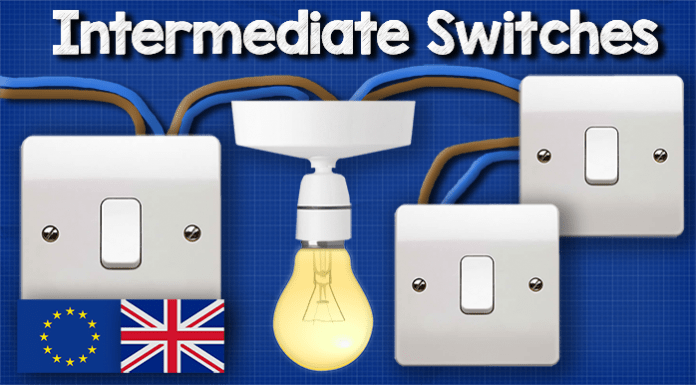



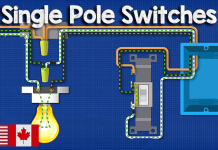
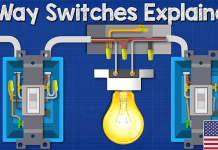

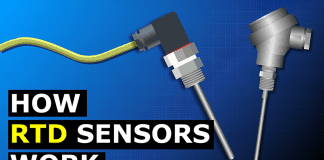


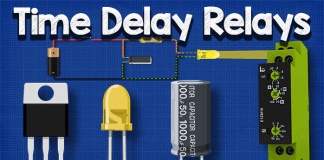

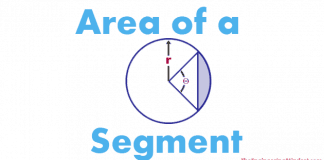
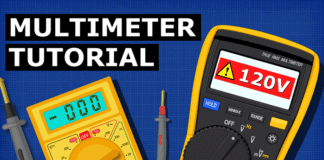







Very useful massage
Hi there my name is Nick Ward I have a duel fuel cooker and I got a isurlater on the wall now the cooker was installed by a engineer and he didn’t have the paper work to do the isurlater on the wall but he’s put the cooker on a 13A at the minute from the cooker we had before which was just gas so he’s used the ignition socket on the wall instead. Now what mm cable do I need for it is it 2.5mm or 6mm as at the minute it’s blowing the fluse in the plug as it’s a duel top overn and bottom oven. Can you help me out please. Thank you Nick ward
But we’re I live is in a council house tenants
I wanted to know the price of two way switch lighting point.What could be the cost if i need 460 pieces to be delivered in Kenya,Nairobi?
can you give example CONDUIT AND SURFACE WIRING SYSTEM ONE WAY SWITCH, TWO WAY SWITCH AND SOCKET OUTLET (RADIAL CIRCUIT) in ladder diagram
Hi, this lesson is for those who have an electrical knowledge,
those that are already Trained in the Electrical Field.
so, if u ‘ve not gone through this training, I do advice u find a
Vocational Training Center to better understand and be guided through the process by professional personnel.
I was wondering if anyone can help me. I have an intermediate switch at the top of the stairs which controls the light directly above it. There is a switch at the end of the landing and one at the bottom of the stairs. I’ve noticed that where the intermediate switch is, there are 3 cables coming in, the one from the switch downstairs, the one from the switch at the end of the landing and the lighting cable itself. Your diagrams above are excellent but I can’t seem to find one where the lighting cable (if that is the right terminology) is connected to the intermediate switch. All of the diagrams have the lighting cable connected to one of the other switches. Can someone help me please?
Do you have a pdf for US wire coloring? I bought the one you have for 3 way switches.